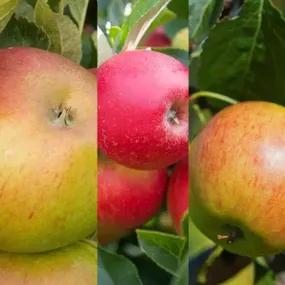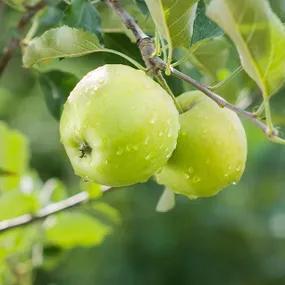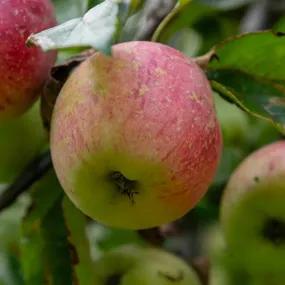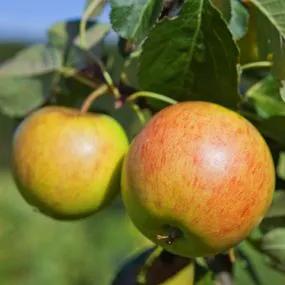The humble apple tree is more widely planted by UK gardeners than any other fruit variety.
Selected varieties are available pot grown year round.
- Uses: Eating, cooking, juicing and cider apple production
- Good Points: Huge variety of tree, shape, blossom, cropping time
- Position: Grow almost anywhere below 600 feet above sea level, where there is drainage and light
Dwarf Apple Trees
There are two kinds of dwarf tree, both of which are suitable for large pots.
- Those that you, the owner, prune and train to restrict their growth, such as cordons and espaliers. You make them from maidens (1-year-old trees), which could also be grown into a normal-sized tree if you let them.
- Those that are "naturally" small due to the specialist grafting techniques and restrictive rootstocks, known as patio, mini, or dwarf fruit trees (which we don't sell). Even without pruning, they will never become a normal-sized tree.
Buying Apple Trees
For most gardens, it makes sense to start with a bush or half-standard, where available.
Remember that if you want espaliers, cordons or stepovers you will need to start with a maiden (selected varieties are available as ready-made cordons).
Barerooted trees are only delivered between November and the end of March, the winter planting season.
Your mail order apple trees are delivered by next working day courier.
If there is anything wrong with your plants when they arrive, Contact Us within 5 working days, and our friendly support team will sort it out.
All bareroot plants are covered by our Refund Guarantee, so you can give them a whirl with complete confidence.





 Img 1.webp)
 1.webp)
 1.webp)
.webp)
 Annie Elizabeth Img 1.webp)
 1.webp)
 Img 1.webp)
 Img 1.webp)
 Img 5.webp)
 Img 1.webp)

 1.webp)


 Img 1.webp)